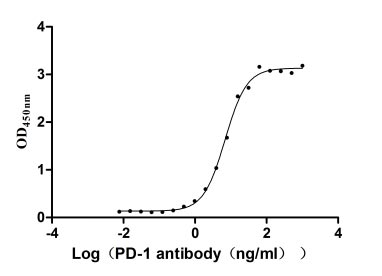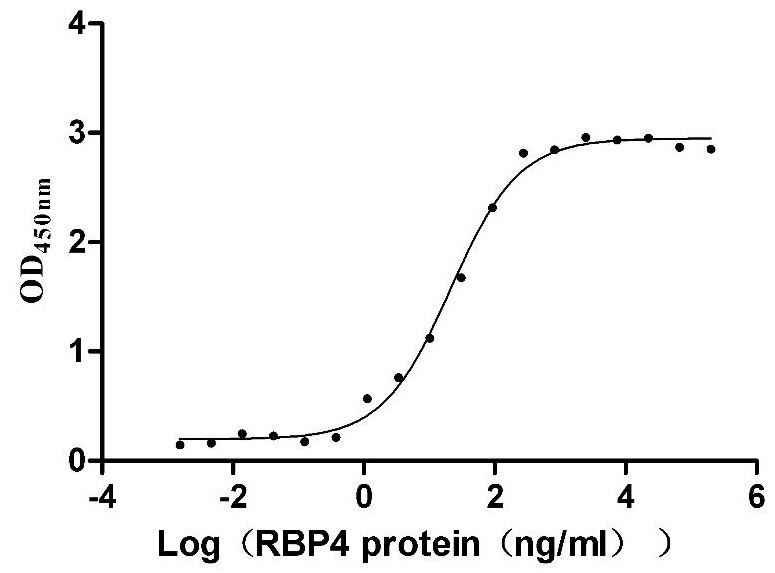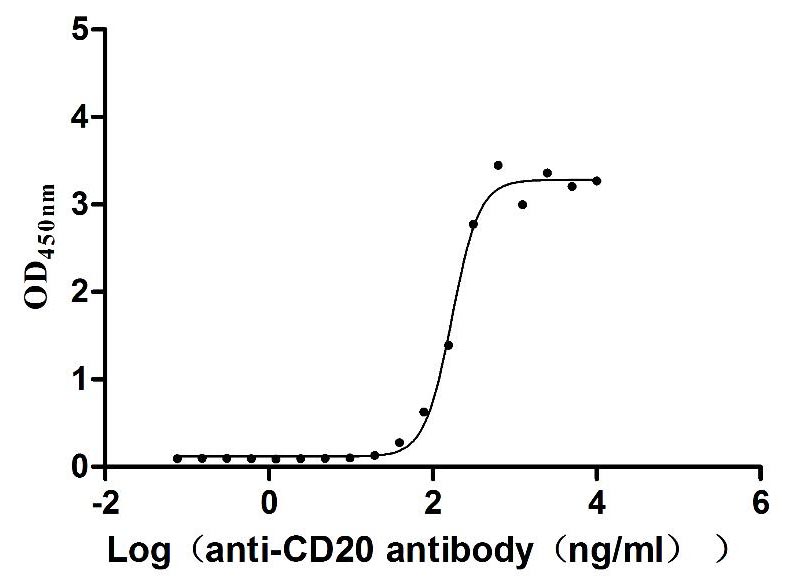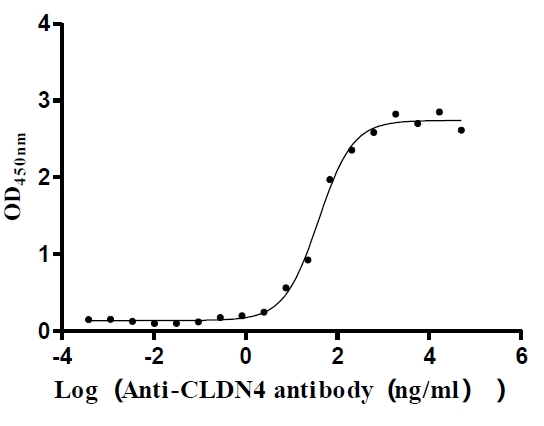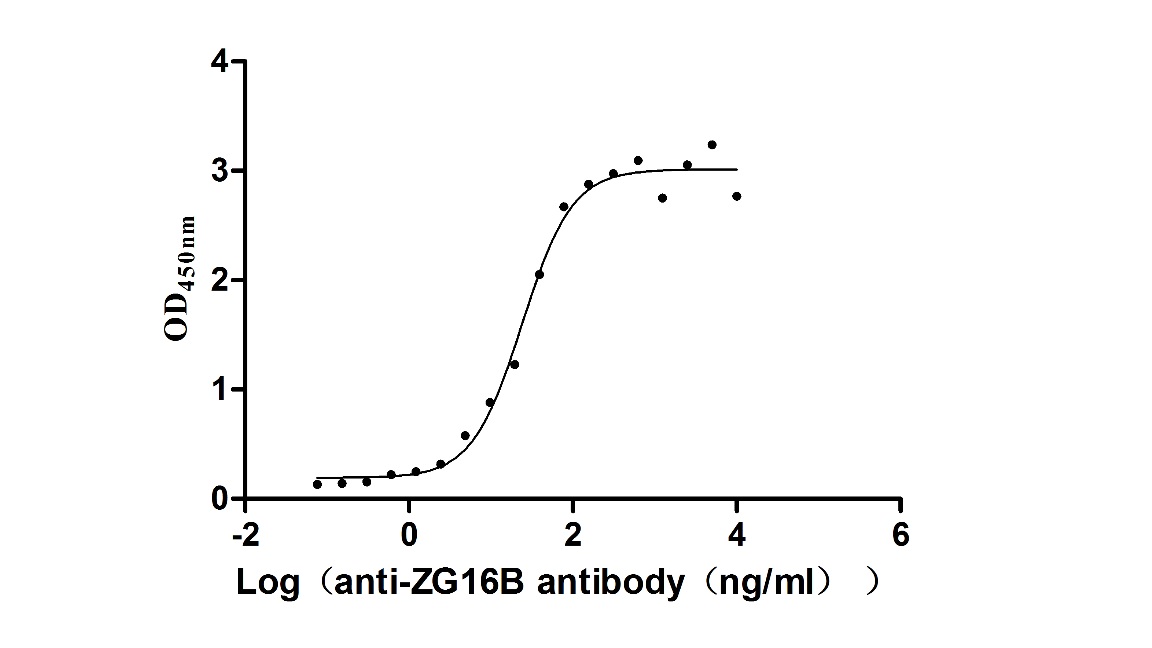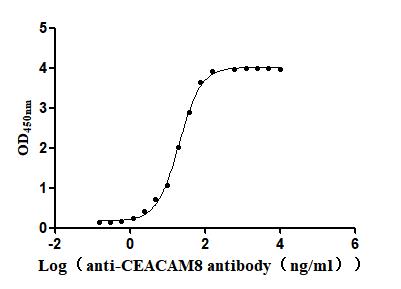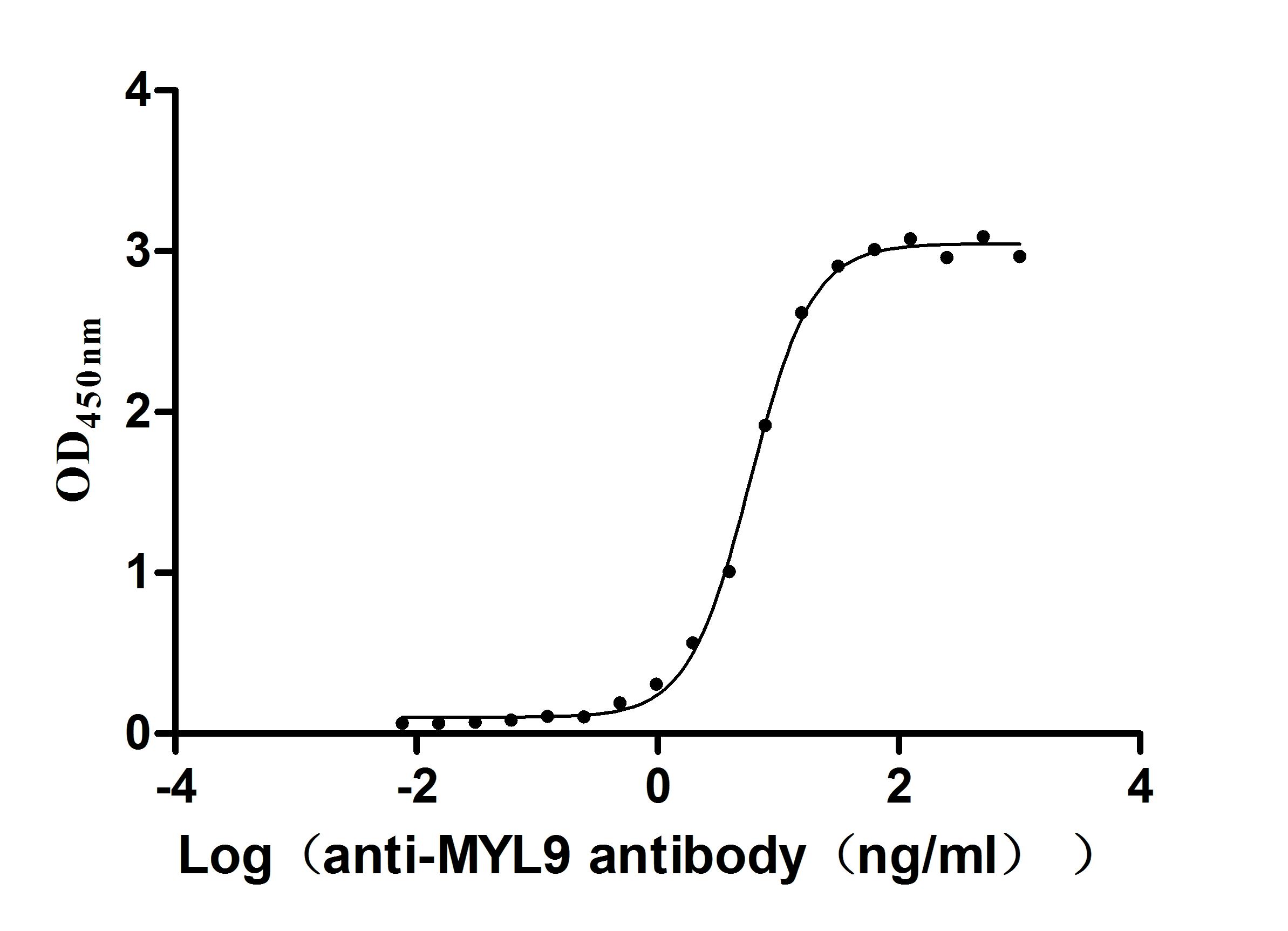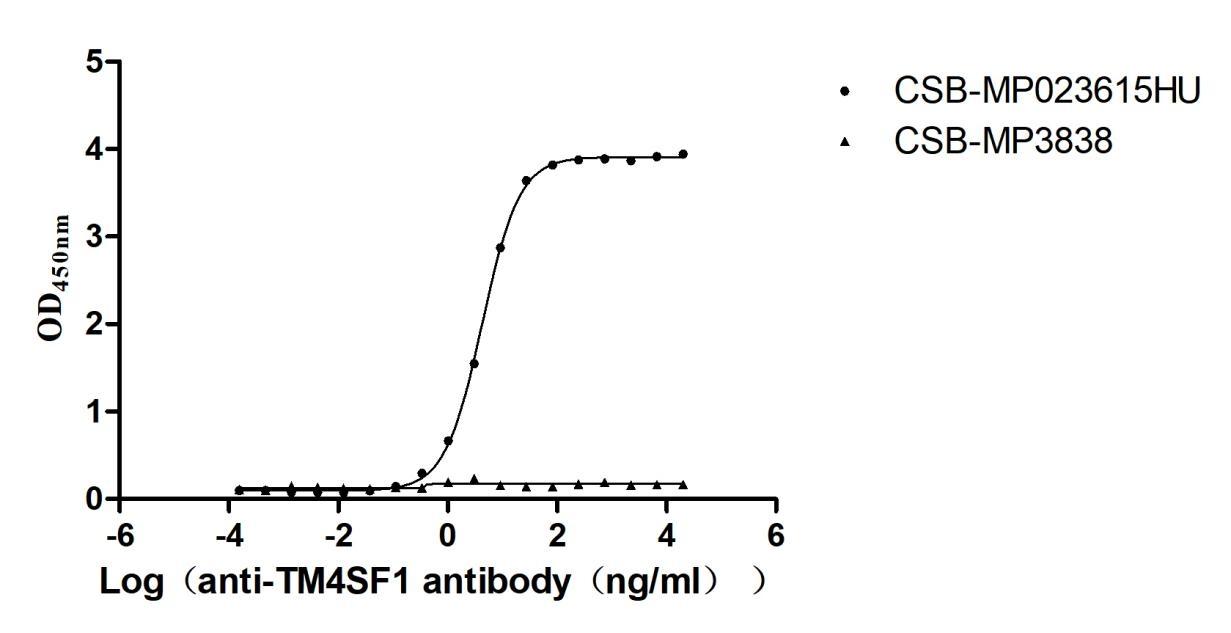Recombinant Clostridium botulinum Botulinum neurotoxin type E, partial
-
中文名称:Recombinant Clostridium botulinum Botulinum neurotoxin type E,partial
-
货号:CSB-YP311468CLQ
-
规格:
-
来源:Yeast
-
其他:
-
中文名称:Recombinant Clostridium botulinum Botulinum neurotoxin type E,partial
-
货号:CSB-EP311468CLQ-B
-
规格:
-
来源:E.coli
-
共轭:Avi-tag Biotinylated
E. coli biotin ligase (BirA) is highly specific in covalently attaching biotin to the 15 amino acid AviTag peptide. This recombinant protein was biotinylated in vivo by AviTag-BirA technology, which method is BriA catalyzes amide linkage between the biotin and the specific lysine of the AviTag.
-
其他:
-
中文名称:Recombinant Clostridium botulinum Botulinum neurotoxin type E,partial
-
货号:CSB-BP311468CLQ
-
规格:
-
来源:Baculovirus
-
其他:
-
中文名称:Recombinant Clostridium botulinum Botulinum neurotoxin type E,partial
-
货号:CSB-MP311468CLQ
-
规格:
-
来源:Mammalian cell
-
其他:
产品详情
-
纯度:>85% (SDS-PAGE)
-
基因名:N/A
-
Uniprot No.:
-
别名:botEBotulinum neurotoxin type E; BoNT/E; Bontoxilysin-E) [Cleaved into: Botulinum neurotoxin E light chain; LC; EC 3.4.24.69); Botulinum neurotoxin E heavy chain; HC)]
-
种属:Clostridium botulinum
-
蛋白长度:Partial
-
表达区域:2-422
-
氨基酸序列PKINSFNYN DPVNDRTILY IKPGGCQEFY KSFNIMKNIW IIPERNVIGT TPQDFHPPTS LKNGDSSYYD PNYLQSDEEK DRFLKIVTKI FNRINNNLSG GILLEELSKA NPYLGNDNTP DNQFHIGDAS AVEIKFSNGS QDILLPNVII MGAEPDLFET NSSNISLRNN YMPSNHRFGS IAIVTFSPEY SFRFNDNCMN EFIQDPALTL MHELIHSLHG LYGAKGITTK YTITQKQNPL ITNIRGTNIE EFLTFGGTDL NIITSAQSND IYTNLLADYK KIASKLSKVQ VSNPLLNPYK DVFEAKYGLD KDASGIYSVN INKFNDIFKK LYSFTEFDLR TKFQVKCRQT YIGQYKYFKL SNLLNDSIYN ISEGYNINNL KVNFRGQNAN LNPRIITPIT GRGLVKKIIR FCKNIVSVKG IR
-
蛋白标签:Tag type will be determined during the manufacturing process.
The tag type will be determined during production process. If you have specified tag type, please tell us and we will develop the specified tag preferentially. -
产品提供形式:Lyophilized powder
Note: We will preferentially ship the format that we have in stock, however, if you have any special requirement for the format, please remark your requirement when placing the order, we will prepare according to your demand. -
复溶:We recommend that this vial be briefly centrifuged prior to opening to bring the contents to the bottom. Please reconstitute protein in deionized sterile water to a concentration of 0.1-1.0 mg/mL.We recommend to add 5-50% of glycerol (final concentration) and aliquot for long-term storage at -20℃/-80℃. Our default final concentration of glycerol is 50%. Customers could use it as reference.
-
储存条件:Store at -20°C/-80°C upon receipt, aliquoting is necessary for mutiple use. Avoid repeated freeze-thaw cycles.
-
保质期:The shelf life is related to many factors, storage state, buffer ingredients, storage temperature and the stability of the protein itself.
Generally, the shelf life of liquid form is 6 months at -20°C/-80°C. The shelf life of lyophilized form is 12 months at -20°C/-80°C. -
货期:Delivery time may differ from different purchasing way or location, please kindly consult your local distributors for specific delivery time.Note: All of our proteins are default shipped with normal blue ice packs, if you request to ship with dry ice, please communicate with us in advance and extra fees will be charged.
-
注意事项:Repeated freezing and thawing is not recommended. Store working aliquots at 4°C for up to one week.
-
Datasheet :Please contact us to get it.
相关产品
靶点详情
-
功能:Botulinum toxin causes flaccid paralysis by inhibiting neurotransmitter (acetylcholine) release from the presynaptic membranes of nerve terminals of eukaryotic host skeletal and autonomic nervous system, with frequent heart or respiratory failure. Precursor of botulinum neurotoxin E which has 2 coreceptors; complex polysialylated gangliosides found on neural tissue and specific membrane-anchored proteins found in synaptic vesicles. Receptor proteins are exposed on host presynaptic cell membrane during neurotransmitter release, when the toxin heavy chain (HC) binds to them. Upon synaptic vesicle recycling the toxin is taken up via the endocytic pathway. When the pH of the toxin-containing endosome drops a structural rearrangement occurs so that the N-terminus of the HC forms pores that allows the light chain (LC) to translocate into the cytosol. Once in the cytosol the disulfide bond linking the 2 subunits is reduced and LC cleaves its target protein on synaptic vesicles, preventing their fusion with the cytoplasmic membrane and thus neurotransmitter release. Electrical stimulation increases uptake of toxin, probably by transiently exposing a receptor found in eukaryotic target synaptic vesicles. Uses the large lumenal domain of synaptic vesicle glycoproteins 2A and 2B (SV2A and SV2B) but not SV2C as receptor; an N-linked glycan of SV2 is essential for receptor function. Host cell gangliosides are also required for neurotoxin uptake and full toxicity. BoNT/E is a 'coincidence detector'; it requires simultaneous binding to coreceptor GT1b and low pH to transform into a membrane-bound, oligomeric channel. Requires trypsinization and reduction before it can be used in assays in vitro.; Has proteolytic activity. After translocation into the eukaryotic host cytosol, inhibits neurotransmitter release by acting as a zinc endopeptidase that catalyzes the hydrolysis of the '180-Arg-|-Ile-181' bond in SNAP25. Hydrolyzes the '185-Arg-|-Ile-186' bond of mouse SNAP23, but not in human which has a different sequence. Recognizes the '146-Met--Asp-186' region of SNAP25. The reaction mechanism probably has a nucleophilic water held in place by Glu-213. Reduction of the interchain disulfide bond occurs in the host cytosol and probably prevents retrotranslocation into the synaptic vesicle.; Responsible for host epithelial cell transcytosis, host nerve cell targeting and translocation of light chain (LC) into host cytosol. Composed of 3 subdomains; the translocation domain (TD), and N-terminus and C-terminus of the receptor-binding domain (RBD). The RBD is responsible for the adherence of the toxin to the cell surface. It probably simultaneously recognizes 2 coreceptors; polysialated gangliosides and either of the receptor proteins SV2A and SV2B in close proximity on host synaptic vesicles. The N-terminus of the TD wraps an extended belt around the perimeter of the light chain (LC), protecting Zn(2+) in the active site. The belt may also prevent premature LC dissociation from the translocation channel and protect toxin prior to translocation. The TD inserts into synaptic vesicle membrane to allow translocation into the host cytosol. Responsible for adherence of the toxin to the cell surface; HC alone prevents uptake of whole toxin by neural cells, and delays paralysis onset by 154%. Significantly decreases uptake and toxicity of whole BoNT/E, but also interferes with uptake of BoNT/C; binds GT1b in vitro. Binds to synaptic vesicle glycoproteins SV2A and SV2B which serve as coreceptors with gangliosides. Interaction with SV2 proteins requires SV2 glycosylation. HC alone significantly decreases uptake and toxicity of whole BoNT/E. HC is responsible for translocation of LC into the host cytosol; an intact disulfide bond between the 2 subunits is required for translocation, which is reduced upon contact with the host cytosol.
-
亚细胞定位:[Botulinum neurotoxin type E]: Secreted.; [Botulinum neurotoxin E light chain]: Secreted. Host cytoplasm, host cytosol.; [Botulinum neurotoxin E heavy chain]: Secreted. Host cell junction, host synapse, host presynaptic cell membrane. Host cytoplasmic vesicle, host secretory vesicle, host synaptic vesicle membrane; Multi-pass membrane protein.
-
蛋白家族:Peptidase M27 family
-
数据库链接:
KEGG: ag:CAA43999
Most popular with customers
-
Recombinant Human Programmed cell death protein 1 (PDCD1), partial (Active)
Express system: Mammalian cell
Species: Homo sapiens (Human)
-
Recombinant Mouse Transthyretin (Ttr) (Active)
Express system: Mammalian cell
Species: Mus musculus (Mouse)
-
Recombinant Dog B-lymphocyte antigen CD20 (MS4A1)-VLPs (Active)
Express system: Mammalian cell
Species: Canis lupus familiaris (Dog) (Canis familiaris)
-
Recombinant Human Claudin-4 (CLDN4)-VLPs (Active)
Express system: Mammalian cell
Species: Homo sapiens (Human)
-
Recombinant Macaca fascicularis zymogen granule protein 16 homolog B (ZG16B) (Active)
Express system: Mammalian cell
Species: Macaca fascicularis (Crab-eating macaque) (Cynomolgus monkey)
-
Recombinant Human Carcinoembryonic antigen-related cell adhesion molecule 8(CEACAM8) (Active)
Express system: Mammalian cell
Species: Homo sapiens (Human)
-
Recombinant Human Myosin regulatory light chain 12A (MYL12A) (Active)
Express system: E.coli
Species: Homo sapiens (Human)
-
Recombinant Human Transmembrane 4 L6 family member 1(TM4SF1)-VLPs (Active)
Express system: Mammalian cell
Species: Homo sapiens (Human)


